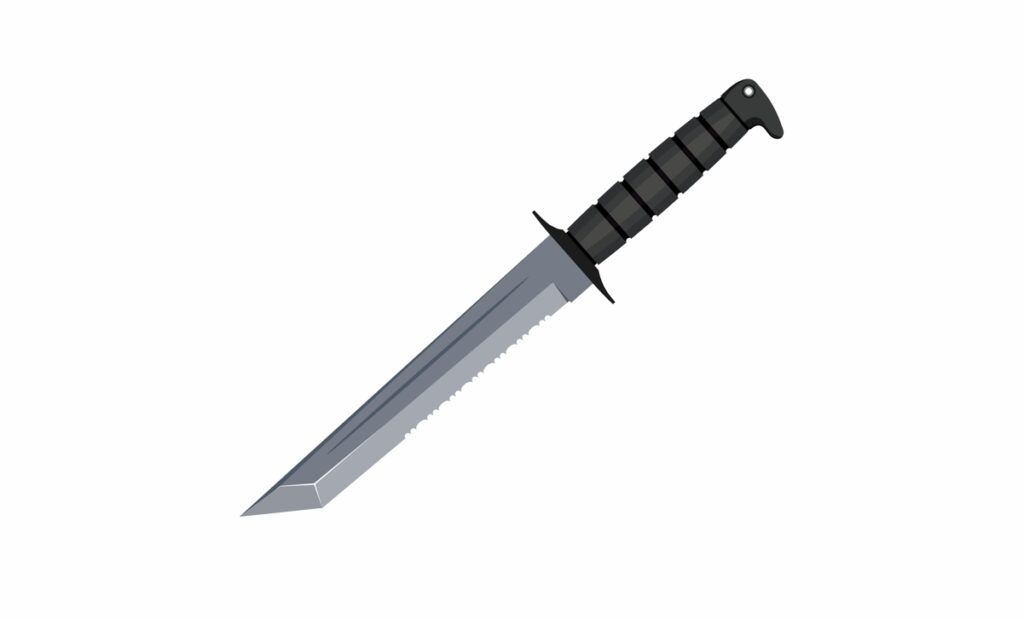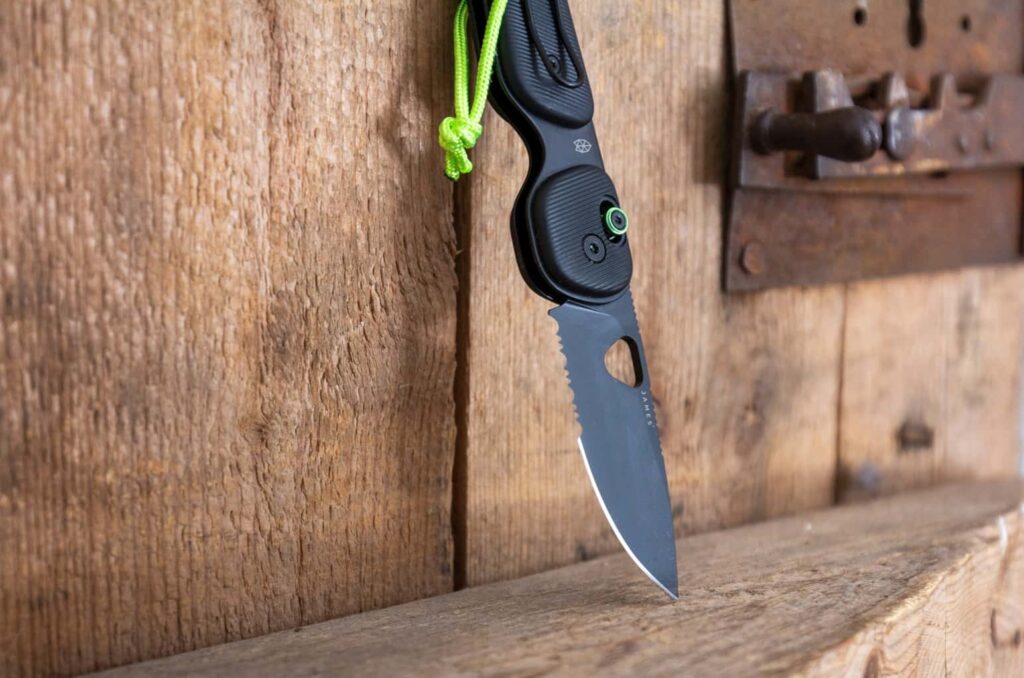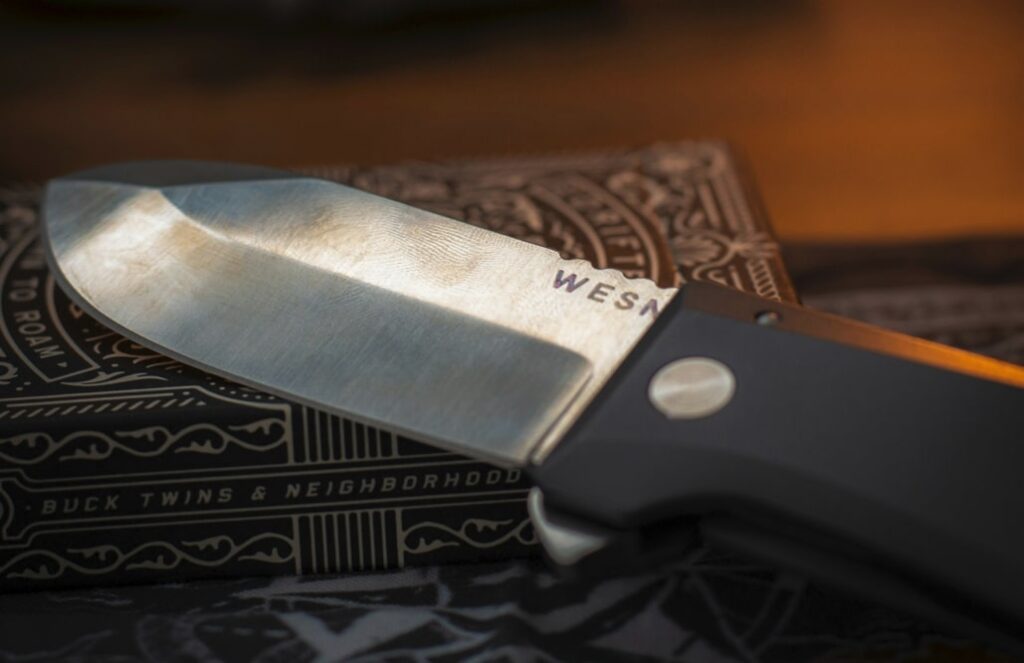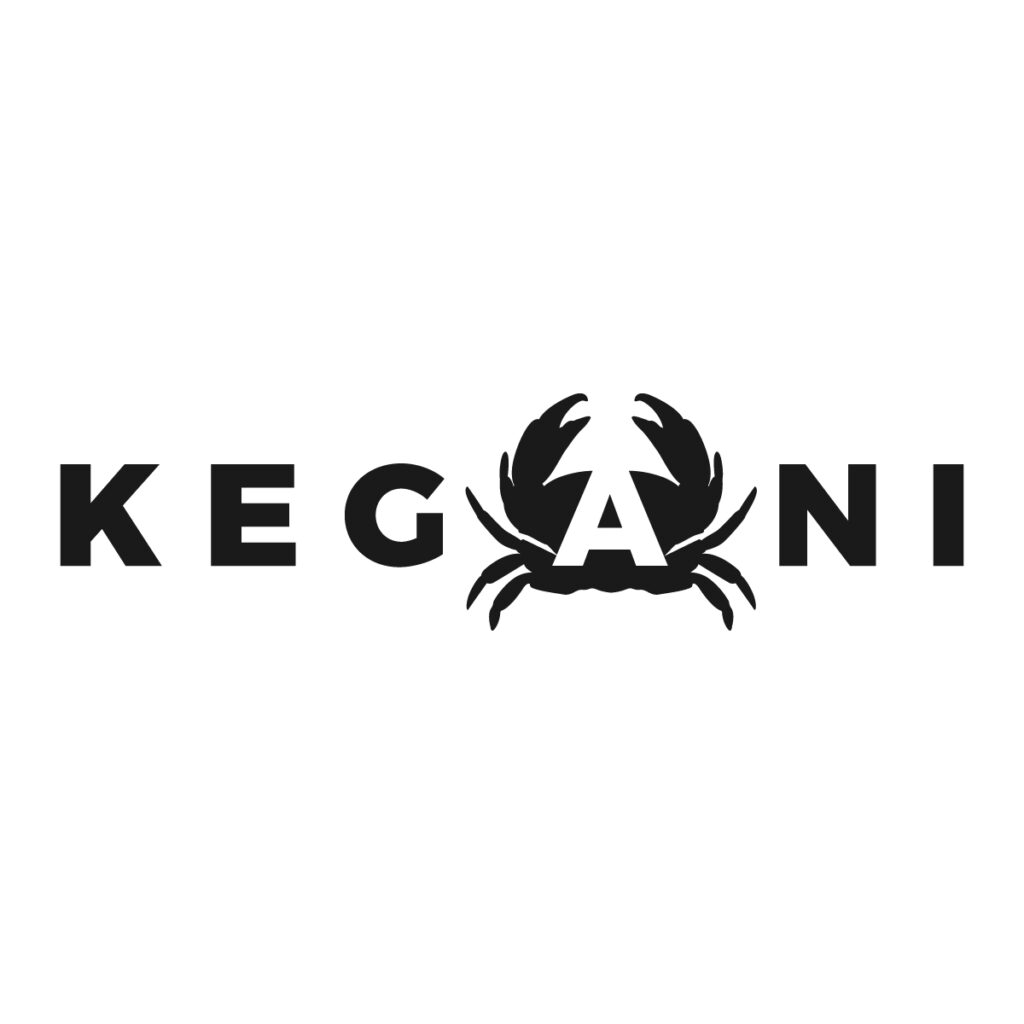When considering a new knife, the shape of the blade is pivotal. The blade shape affects the performance of a knife for various tasks, in more ways than one. Two popular blade shapes you may encounter are the tanto and the drop point blade.
The tanto blade originated in Japanese swordsmanship. It has a high point with a flat grind, leading to an extremely strong point that’s perfect for piercing through tough materials. They are often found in tactical knives due to its strength and puncture ability.
On the other hand, the drop point blade is known for its versatility. It is a very common choice for hunters, outdoor enthusiasts, and everyday carrying. With a gently sloping spine that extends from the handle to the tip. The drop point provides a large cutting area that makes it ideal for slicing tasks. The drop point blade is a reliable, all-purpose design. The lowered tip allows for better control and adds strength to the tip.
Both blade shape offers their own features. Read more into the article and find out which blade shape is your ideal choice.
Overview of knife blade shapes
A variety of blade shapes exist that sellers must choose from when they select a new knife. The shape of a blade serves an important role because it influences the utility of the knife. If you’re having trouble understanding what that means, let’s break it down.
For example, a hawkbill blade with a curved downward tip shines in whittling tasks. While a flat cleaver blade is best for cutting and slicing.
The nuances of blade shapes don’t stop there. The angle of how the tip and belly curve, the little indent, all contribute to the experience of using a knife. While these details may seem trivial to most, you want to learn as much as possible as a seller before committing to a knife.
Start Working with a Professional Now
What is a Tanto blade

A tanto blade is a knife design with deep roots in Japan. Originally modeled after the famous short sword named Tantō. It is used on samurai swords and daggers. The defining characteristics of a tanto blade is the high point with a flat grind. Which leads to an exceptionally strong tip. This design is tailored to provide the ability to pierce through hard materials.
Though it originated in Japan, the tanto blade you see in the market is likely to be the American version that Cold Steel developed in 1980. The difference is that the American tanto has a more exaggerated angle on the tip.
The front edge of the blade, known as the primary edge, meets the back (or spine) edge at an angle, rather than a curve. Tanto blades exhibit a straight, or minimally curved, spine that proceeds to the handle, which contributes to their overall robustness.
You might find the tanto blade ideal for tasks that require a strong puncturing point. Such as piercing through tough materials like wood or even armor. Because of its design, this type of knife is often used in tactical situations, where the strength of the tip is paramount.
A tanto blade stands out for its durability and specific functional applications, making it a distinct choice among various blade types available to you.
Reverse tanto
It’s obvious from the name. The reverse tanto blade is of the same design as the tanto blade but reversed upside down. Instead of a shorter edge, the reverse tanto blade has a shorter spine but a longer blade edge. The reverse tanto has seen use in tactical and combat knives.
What is a drop point blade?

A drop point blade is characterized by its curved spine and a blade tip that lowers onto the same plane as the belly of the blade. The spine gently slopes from the handle to the tip without sudden transitions. This design results in a point that is stronger and more controllable, which favors measured slicing or cutting. The drop point is admired for its versatility and is commonly found in hunting and general-purpose knives.
The drop point blade typically sports a large belly. wWhich is ideal for slicing applications. It’s designed to allow the edge to make long cuts with ease, which translates to efficient use for everyday cutting tasks.
Moreover, due to its tip strength and positioning, your drop point blade offers enhanced control during tasks that require precision. It also tends to feature a relatively straight back, which can be convenient for batoning—splitting wood by driving the knife through it with a tool.
The design of the drop point blade lends itself to a wide range of applications, from the detailed tasks of camping and survival to the rigorous demands of tactical situations. It has achieved its status as a favoured everyday carry (EDC) blade shape due to this versatility.
Tanto blade vs. drop point blade
Now, let’s get to the heart of the matter. How do these two blade shapes compare to each other in every sense, from design differences to preferred usage?
Design
The tanto blade is inspired by the traditional Japanese short sword, known for its strong tip and straight edge, which were originally optimized for piercing through tough materials. In contrast, the drop point blade features a convex curve from the spine to the tip, designed for general use and versatility.
Piercing and slicing performance
When it comes to piercing capability, the tanto blade is superior, as its angled edge and reinforced tip concentrate force more effectively into a small area. However, if your priority is slicing, the curved edge of the drop point blade offers a smooth, controlled cut, superior for slicing due to the larger surface area of the edge in contact with the material being cut.
Pros and cons of tanto and drop point blade
Tanto and drop point blades are popular options, each with distinct advantages and limitations.
Tanto blade
- Strong tip: Your tanto blade’s tip is designed for puncturing tough materials due to its high point with a flat grind, translating to enhanced strength.
- Limited belly: Tanto blades lack a significant curve on the cutting edge, meaning you might find them less suitable for tasks requiring long, sweeping cuts.
- Difficult sharpening: With two edges meeting at an angle, your tanto blade may be more challenging to sharpen since it lacks the continuous edge common to other styles.
Drop point blades
- Utilitarian design: The drop point blade is known for its versatility, making it ideal for a variety of tasks, from hunting to everyday carry.
- Large belly: This blade style offers you an ample curved cutting edge or “belly,” making slicing tasks easier and more efficient.
- Tip strength: While still strong, the drop point’s tip isn’t as reinforced as a tanto’s, which may be a consideration if tip strength is a priority for you.
- Precision point: Your drop point blade provides excellent control, but for piercing tasks, it is not as optimized as the tanto shape.
Each blade type presents a trade-off between edge geometry, tip strength, and slicing capability. The choice should be informed by the type of tasks you plan to perform most frequently.
Start Working with a Professional Now
Applications for each blade type

Different blade shapes naturally offer distinct uses and features, granting their own advantages in various fields over others. This results in different applications these blade shapes may be used for, ranging from everyday carry to hunting to tactical uses. When choosing among the various blade shapes, not only tanto and drop point, selecting the one that aligns with the intended uses of your ideal knife is paramount.
Everyday carry uses
For EDC needs, drop point blades are extremely versatile. Their long, uninterrupted cutting edge is ideal for a variety of tasks, making them a preferred choice for pocket knives. Additionally, their large belly facilitates easy slicing, which is useful for daily tasks such as opening packages or cutting cords.
Tanto blades are less common for everyday carry but provide a strong point that is beneficial for tasks that require piercing strength, such as puncturing tough materials.
Hunting and outdoor scenarios
If your customers are enthusiasts in hunting or camping, a drop point blade is particularly well-suited. Its design promotes precise control and is excellent for skinning game due to its smooth curve. Its tip strength isn’t compromised, which is crucial when you’re in the outdoors and may need to rely on your knife for various tasks.
On the other hand, survivalists may appreciate tanto blades for their ability to perform specific tasks in survivalist conditions. A tanto blade is characterized by its strong tip. Which is designed to excel in penetration tasks, especially when you need to penetrate tough materials. This can be invaluable in certain bushcraft or emergency scenarios.
Combat and self-defense situations
In combat and self-defense situations, tanto blades are often favored for their tactical advantages. The angled tip provides exceptional strength for stabbing, a common requirement in combat scenarios.
Drop point blades, while not as optimized for piercing, offer more utility and can serve as a practical tool in self-defense due to their ease of control and strength, which are essential factors in high-stress environments.
Tanto or drop point?
A closer look at the two blade shapes can assist you in choosing the right one. Both are popular among enthusiasts.
With a drop point blade, you gain a larger cutting surface that benefits scraping and cutting tasks. Meanwhile, tanto blades may have a secondary tip, similar to some clip points, providing extra utility for specific tasks.
In conclusion, select a tanto blade if you need a knife to have strong puncturing power. If the knife lean towards general use with frequent slicing, a drop point would likely serve better. Both designs have their place, and the right choice depends on you.
Manufacturing tanto and drop point blades is our specialty at Kegani. We have extensive experience working with customers who have both demands. Understanding your needs, we have the resources to forge knives at a steady pace to support your business. Contact us now to learn more.

